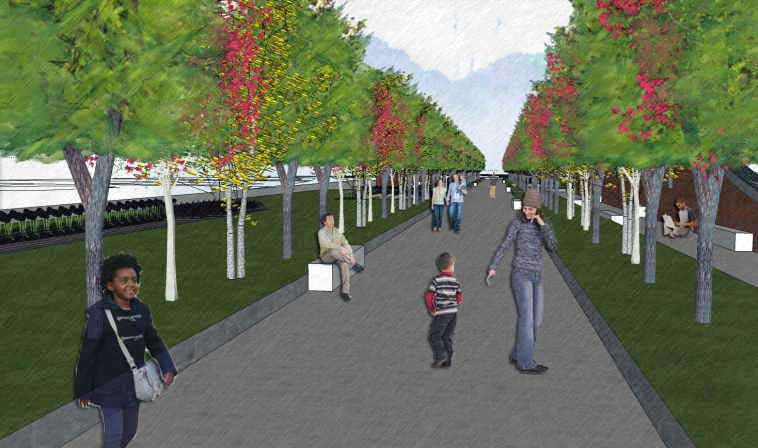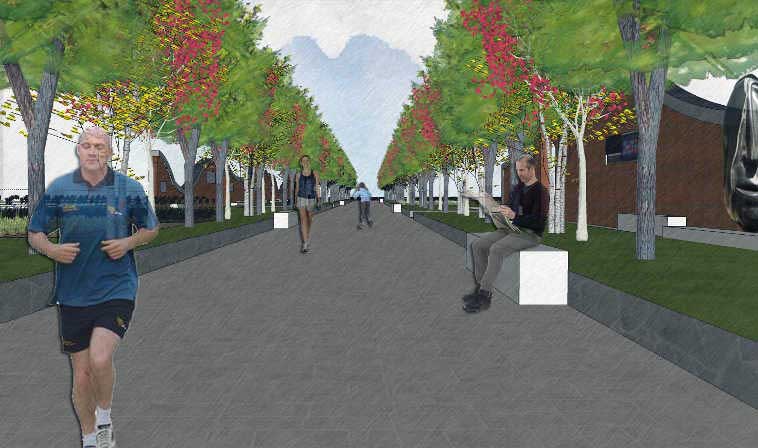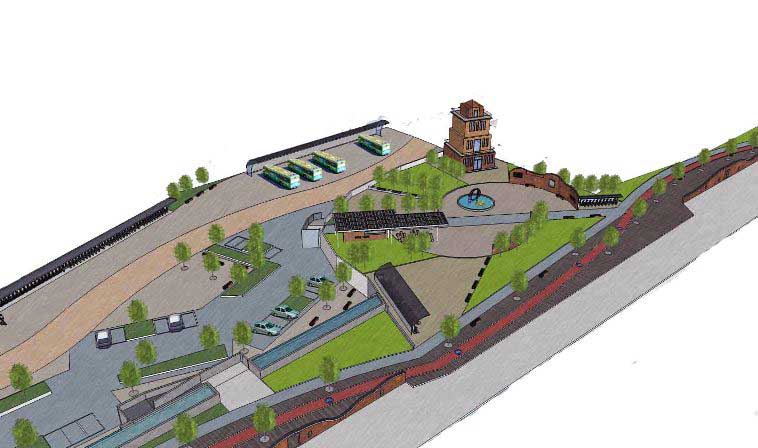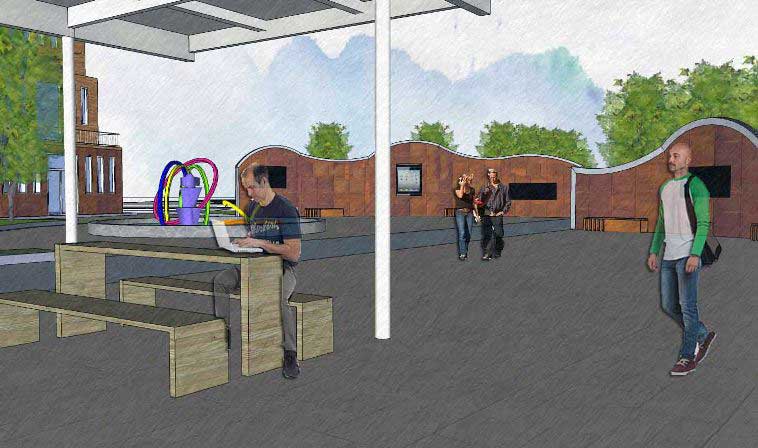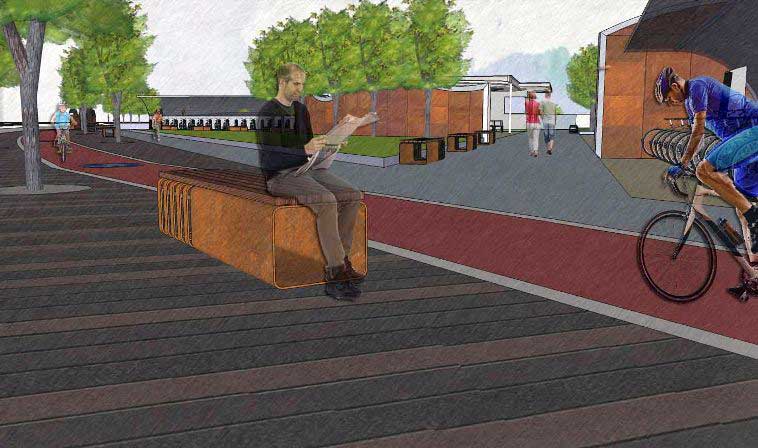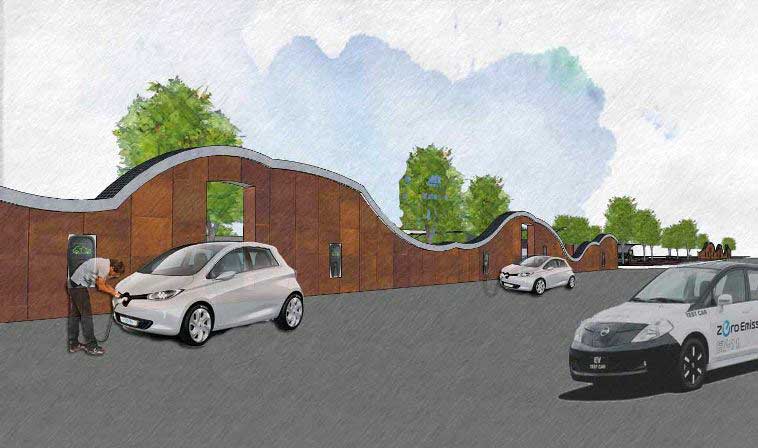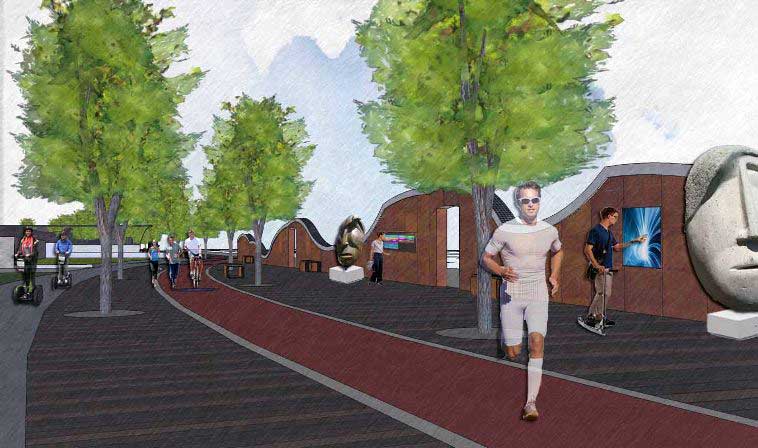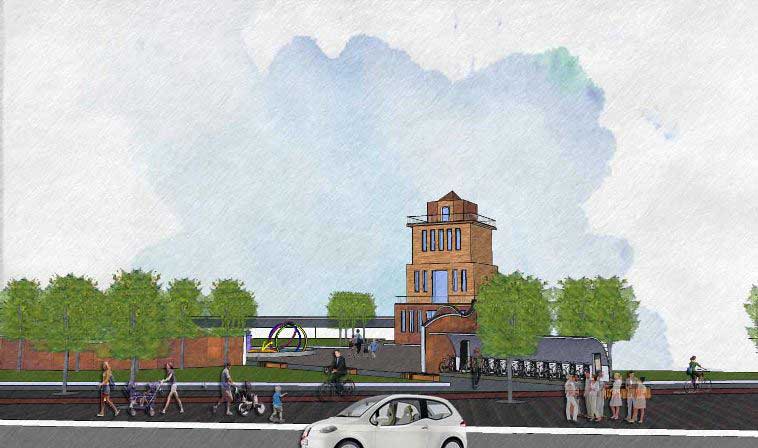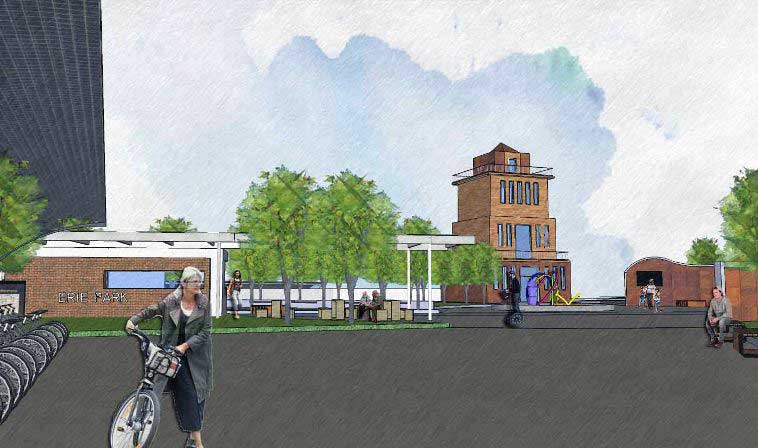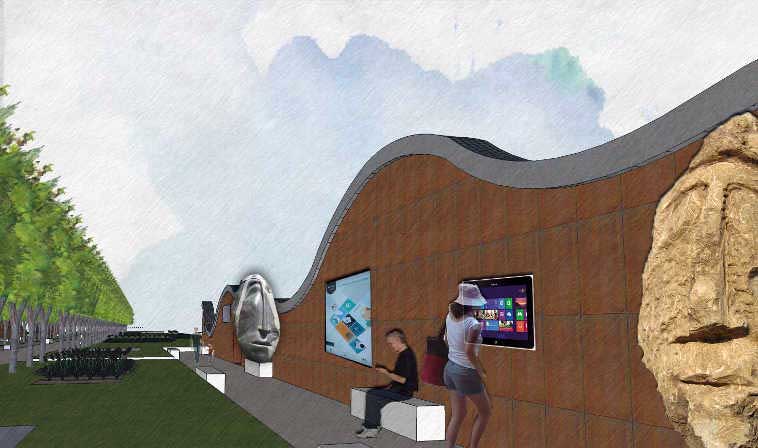 passa a lingua italiana
passa a lingua italiana
Between highly sustainable development and total flexibility of connections
The sustainable development of road network passes is made possible by using electric energy obtained from natural renewable sources. This project represents a "pilot" example for a highly innovative solution, made up of a highly infrastructural system which is reproducible across all the original route of the Erie Canal, the State of New York and other urban contexts.
The fundamental element of this architectural idea is the "tutor", that is to say the linear engineered structure which stretches across all the route. The tutor contains right inside an integrated infrastructural network and optical fibres which will make the creation of telephone lines and electrical connection possible. This high-tech system that will give residents, tourists and any other users the opportunity to have a computer network, useful for communications, and electric energy for intermodal traffic circulation through the electric system.
Block, Branch and Bridge will become, in the project, rest areas and most of all meeting points useful for organizing the various of the various functions of the entire Boulevard. Along it, developing traditional traffic circulation (existing bike paths) will be possible, together with (consists of existing bike paths) and also innovative, intermodal, driveability, characterised by vehicles such as:
- SEG WAY
- SCOOTER
- ELECTRIC BICYCLE
- ELECTRIC MOTORCYCLE
- ELECTRIC CAR
- ELECTRIC MINIBUS
These vehicles should be easily accessible and their use will be regulated by specific control systems for residents, with specific control procedures also for tourists.
Therefore, starting from any of the three points - Block, Branch and Bridge - covering the entire distance of 4 miles using of one of the abovementioned vehicles will be possible. Users will also be able to switch from one of them to the other either in Block, with the possibility to share one of them in correspondence of the same sites - Block, Branch and Bridge - that become as old as "posting stations". Along the way it will also be possible to change the vehicle the tourism opportunities offered by the route, such us thematic towers for cultural divulgation, green areas hosting examples of biodiversity (tanks), rest areas and natural playgrounds.

"Tutor"
"Tutor" is the structural core of the entire project. It is made of a multiple channel system in aluminium containing optical fibre and electrical cables. The tutor is covered by slabs of cor-teen steel, and it sinuously follows the path: it becomes an interconnection element and the "console" supporting urban daily life.
"Thematic towers", made of wood and Cor-ten steel
Each site - Block, Branch, Bridge and Boulevard - will be provided with a "thematic tower" with average/standard map, measuring 33 feet per side. It will be a wooden construction and a facade finished, in part, with Cor-ten steel.
Each tower will represent a particular theme:
- The Block:
Natives belonging to New York State, that is to say, the people of Iroquois and its tribes, such as: Seneca, Cayuga, Oneida, Onondaga, Mohawk and Tuscarora. The tower will tell the history of Iroquois people, its culture and its relations with the territory in digital way. - The Branch:
The tower will tell the flora and the fauna, namely biodiversity of the areas crossed by Erie Canal in digital ways, indicating the original aspects, those already destroyed by man and those to be restored. - The Bridge:
The thematic tower will tell about the sustainability and the development of electric transport in its various applications, investigating its future development. - Along the Boulevard, in a midpoint, will be located the monographic tower that will illustrate the transformations of the urban nature with digital and historical reconstructions (growth of urban centres and their transformations).

Summary of the project
- The project and its contents, stimulates connections along the Canal way thanks to the opportunities offered bay electrical road network.
- The opportunities created along the path and the cultural investigation of the monographic tower at the Branch, increased sensitivity to the biodiversity.
- This project foresees a wide use of all types of existing electrical vehicles; the presence of cultural opportunities represented by thematic provides users with the chance of having fun and participating to meetings. The use of the optical fibre infrastructure, that ensures connection with long range network, will realize, with this project, a secure economic development.
- With the use of wide range of electrical vehicles, integrated in existing traditional traffic circulation, it will be possible to offer a multimodality in road connections.
- The idea of the project is completed with the inclusion, along the path of sculptures in stone, large Italian sculptor Gelsomino Casula, Uta born in the province of Cagliari.
december 2015
arch. Alfredo DePasquale
variante alla statale 18, 984091 Battipaglia (SA) Italy
arch. Generosa Trignano
via A.Annunziata, 1484018 Scafati (SA) Italy


